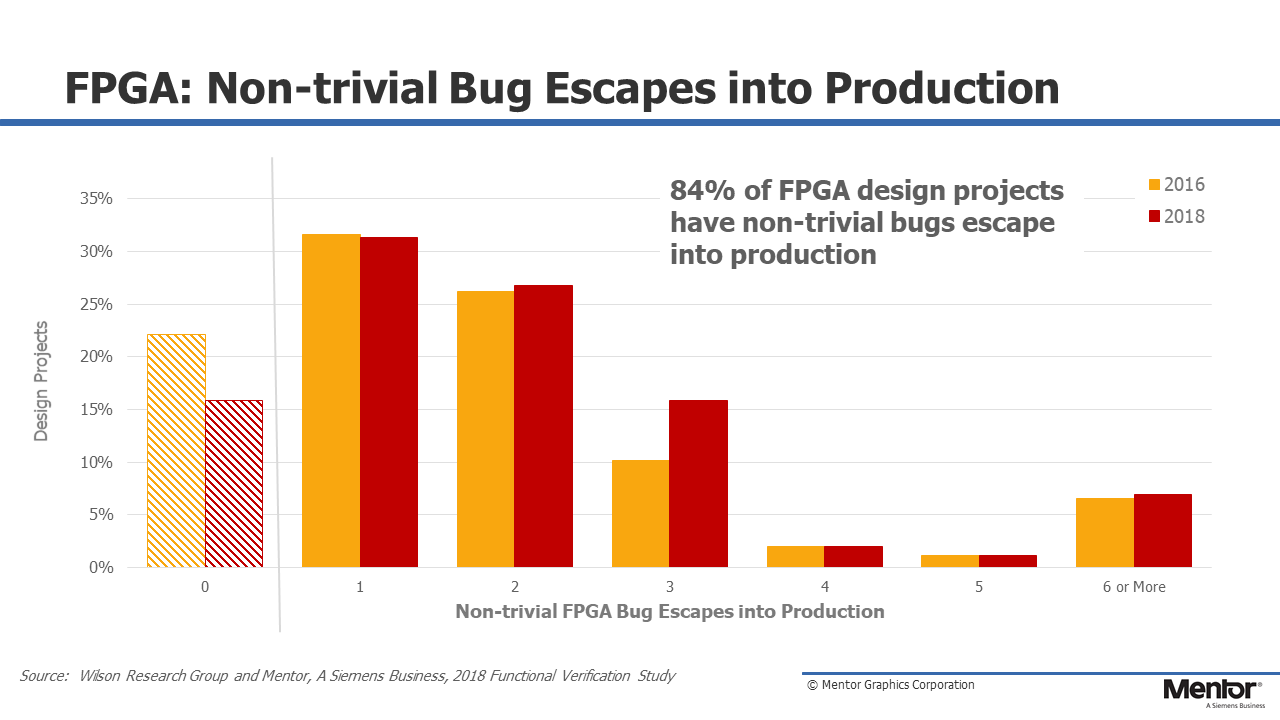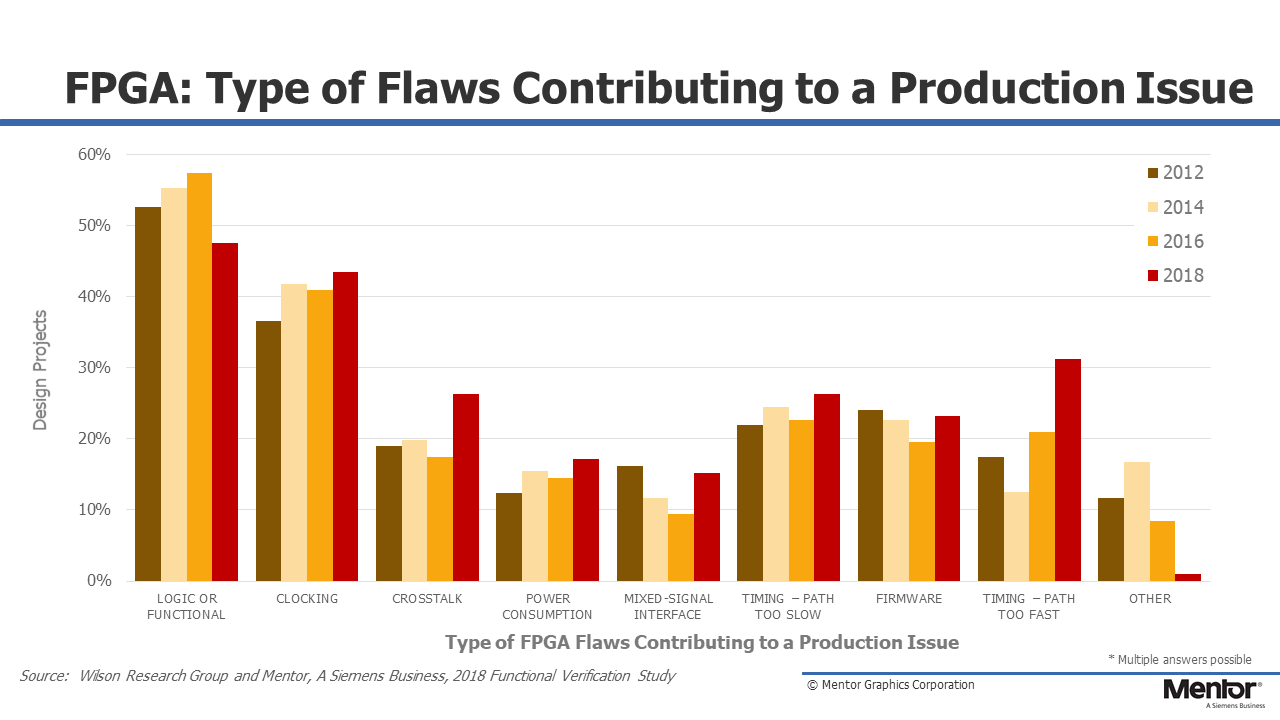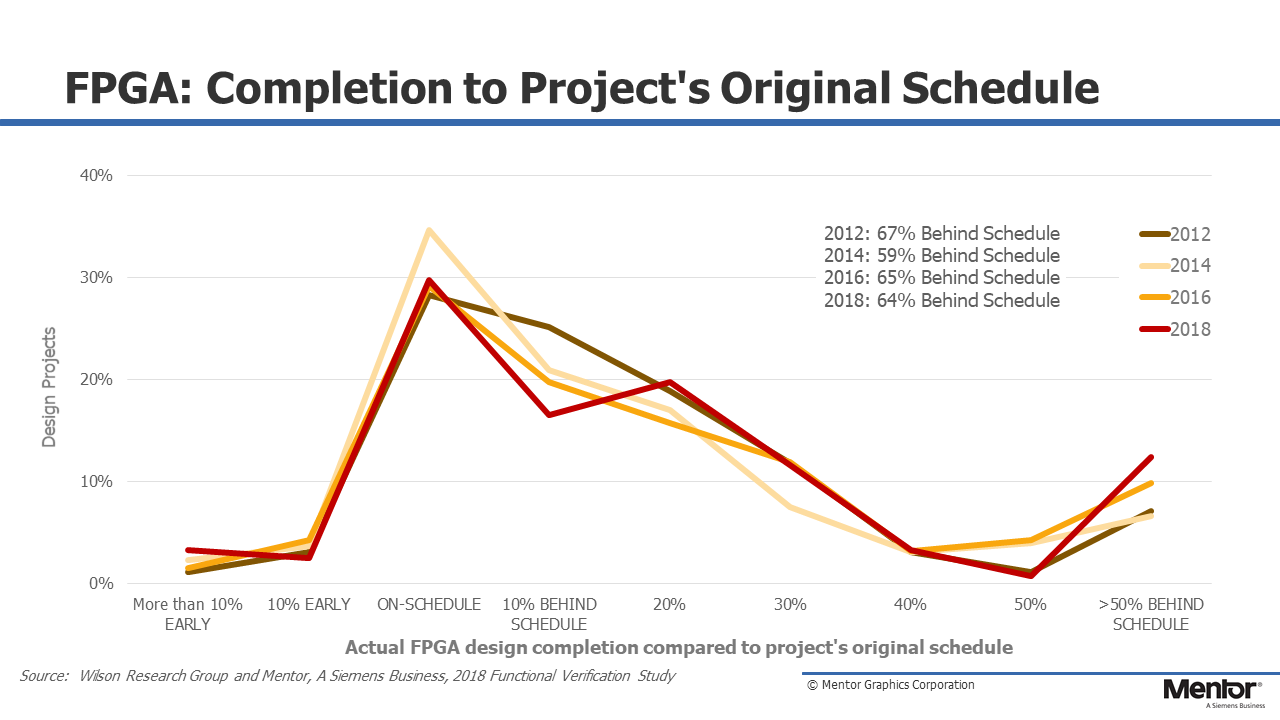Part 2: The 2018 Wilson Research Group Functional Verification Study
This blog is a continuation of a series of blogs related to the 2018 Wilson Research Group Functional Verification Study (click here). In my previous blog (click here), I focused on FPGA design trends. In this blog, I present the findings from our new study related how successful FPGA projects are in terms of verification effectiveness.
FPGA Verification Effectiveness
Non-Trivial Bug Escapes
IC/ASIC projects have often used the metric “number of required spins before production” as a benchmark to assess a project’s verification effectiveness. Historically, about 30% of IC/ASIC projects are able to achieve first silicon success, and most successful designs are productized on the second silicon spin. Unfortunately, FPGA projects have no equivalent metric. As an alternative to IC/ASIC spins, our study asked the FPGA participants “how many non-trivial bugs escaped into production?” The results shown in Fig. 2-1 are somewhat disturbing. In 2018, only 16% of all FPGA projects were able to achieve no bug escapes into production, which is worse than IC/ASIC in terms of first silicon success, and for some market segments, the cost of field repair can be significant. For example, in the mil-aero market, once a cover has been removed on a system to upgrade the FPGA, the entire system needs to be revalidated.

Fig. 2-1. Non-trivial FPGA bug escapes into production
Types of Flaws Resulting in Non-Trivial Bug Escapes
Fig. 2-2 shows various categories of design flaws contributing to FPGA non-trivial bug escapes. While the data suggest an improvement in percentage of “logic or functional flaws,” it remains the leading cause of bugs. This reduction of “logic and functional flaws” is likely due to the FPGA market maturing its verification processes, which we will quantify in upcoming blogs as well as increased adoption of mature design IP for integration.

Fig. 2-2. Types of flaws resulting in FPGA bug escapes
Design Completion Compared to Original Schedule
In addition to bug escape metrics that we used to determine an FPGA project’s effectiveness, another metric we tracked was project completion to the original schedule, as shown in Fig. 2.3. Here we found that 64% of FPGA projects were behind schedule. One indication of growing design and verification complexity is reflected in the increasing number of FPGA projects missing schedule during the period 2014 through 2018.

Fig. 2-3. Actual FPGA project completion compared to original schedule
In my next blog (click here), I’ll focus on verification effort trends related to FPGA designs.
Quick links to the 2018 Wilson Research Group Study results
- Prologue: The 2018 Wilson Research Group Functional Verification Study
- Understanding and Minimizing Study Bias (2018 Study)
- Part 1 – FPGA Design Trends
- Part 2 – FPGA Verification Effectiveness Trends
- Part 3 – FPGA Verification Effort Trends
- Part 4 – FPGA Verification Effort Trends (Continued)
- Part 5 – FPGA Verification Technology Adoption Trends
- Part 6 – FPGA Verification Language and Library Adoption Trends
- Part 7 – IC/ASIC Design Trends
- Part 8 – IC/ASIC Resource Trends
- Part 9 – IC/ASIC Verification Technology Adoption Trends
- Part 10 – IC/ASIC Language and Library Adoption Trends
- Part 11 – IC/ASIC Power Management Trends
- Part 12 – IC/ASIC Verification Results Trends
- Conclusion: The 2018 Wilson Research Group Functional



Comments